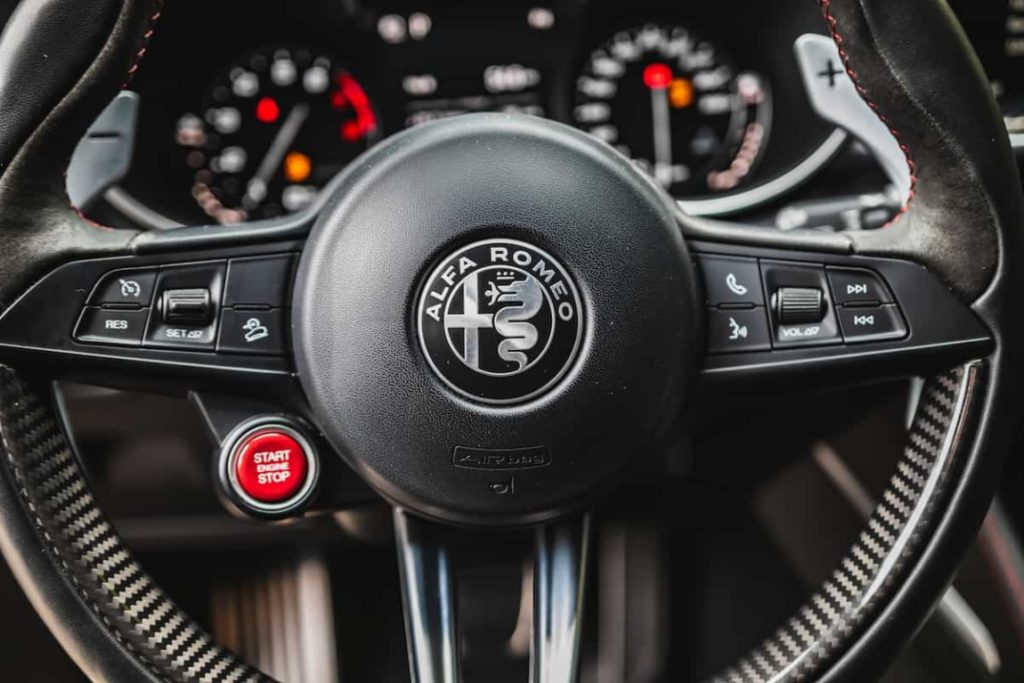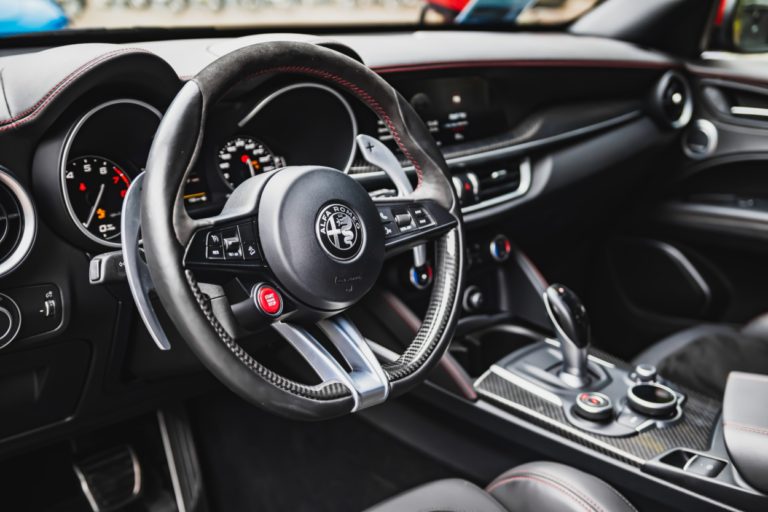The tire pressure monitoring system (TPMS) in the Alfa Romeo Stelvio works by using sensors located in each tire to measure the air pressure and temperature. The sensors send this information to the car’s TPMS receiver which displays the data on the dashboard. (pressure in each tire) If the pressure in any tire drops below a certain threshold, the system will alert the driver with a warning light and an audible alarm. This direct TPMS of the Alfa Romeo Stelvio helps ensure that your tires are always at the correct pressure, improving safety, vehicle performance, fuel efficiency, and tire life.
How Does the Alfa Romeo Stelvio TPMS Work?
The TPMS uses sensors located in each tire to measure air pressure and temperature.
The sensors send data to the car’s receiver, which displays the information on the dashboard.
If the pressure in any tire drops below a certain threshold, the system alerts the driver with a warning light and an audible alarm.
The TPMS in the Alfa Romeo Stelvio is a direct TPMS system, meaning that each tire has its own sensor that communicates with the receiver.
The TPMS helps ensure that your tires are always at the correct pressure, improving safety, vehicle performance, fuel efficiency, and tire life.
It’s still important to regularly check your tire pressure and maintain proper tire maintenance, even with TPMS.
Alfa Romeo Stelvio Tire Pressure Light Reset Procedure
When the tire pressure light on the dashboard lights up, pull over and check your tire pressure.
Determine which tire is causing the tire pressure light to turn on and adjust the tire pressures accordingly.
Always adjust tire pressures when the tires are cold to get the most accurate readings.
After adjusting tire pressures to the recommended levels, drive the vehicle.
We recommend driving the vehicle for at least a few miles at at least 25 mph.
If the tire light does not go off after following these steps, one or more tires likely has a leak or a faulty sensor, usually caused by a dying battery in the individual sensor.
What Happens When Tires are Underinflated?
Reduced fuel efficiency due to increased rolling resistance and more engine power needed to move the vehicle.
Uneven tire wear due to increased stress on the tire’s edges, reducing the tire’s lifespan.
Reduced handling and traction due to decreased contact area between the tire and the road.
Increased risk of blowouts or tire failure due to higher temperatures and increased stress on the tire’s internal components.
Longer braking distances due to decreased contact area between the tire and the road, increasing the risk of accidents.
Increased risk of hydroplaning on wet surfaces due to decreased contact area between the tire and the road, reducing the tire’s ability to displace water.
Reduced ride comfort due to decreased cushioning between the tire and the road surface.
What are Common Causes for Tire Pressure Light to Turn On?
Low tire pressure due to a slow leak, a puncture, or a faulty valve stem.
High tire pressure due to overinflation or a malfunctioning TPMS sensor.
Temperature changes are the number one cause for tire pressure lights to turn on. Tire pressure can decrease by 1 psi for every 10 degrees Fahrenheit drop in temperature.
Faulty TPMS sensor or receiver, which can cause inaccurate readings or false alerts. Receivers tend to be the last thing to fail out of all the components of the tire pressure monitoring system.
Damaged or corroded TPMS sensors, which can cause them to malfunction or fail completely. Cars that sit without being driven for long periods of time can cause corrosion on tire valves leading to faulty TPMS sensors.
Installing new tires or wheels without resetting the TPMS system, causing it to display inaccurate readings.
Improper tire maintenance such as not checking tire pressure regularly or failing to properly inflate tires after a repair or replacement. After a tire has been repaired from a puncture, be sure to check your tire is at the correct PSI.
Electrical problems or software issues within the car’s TPMS system.


